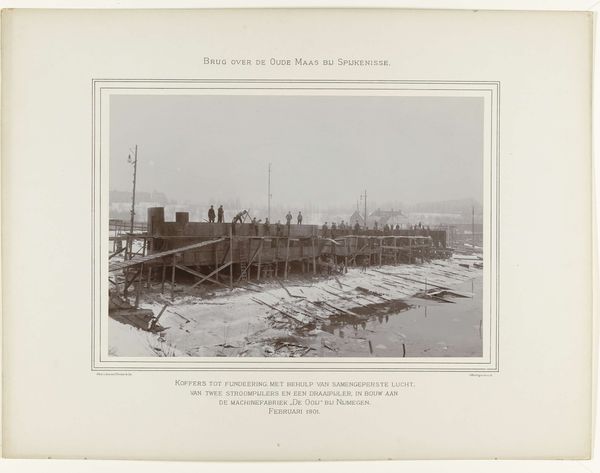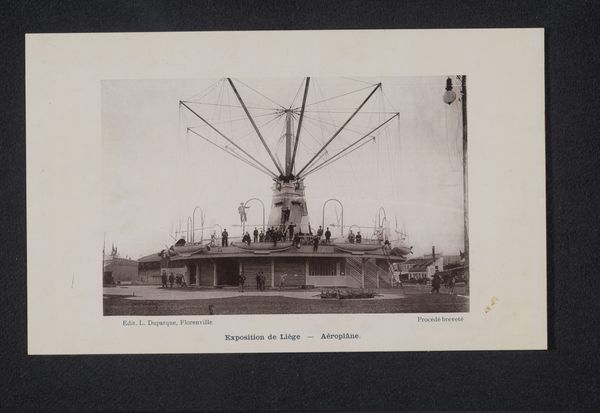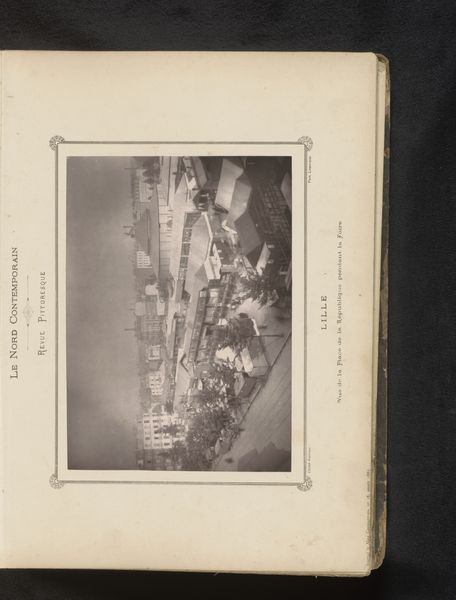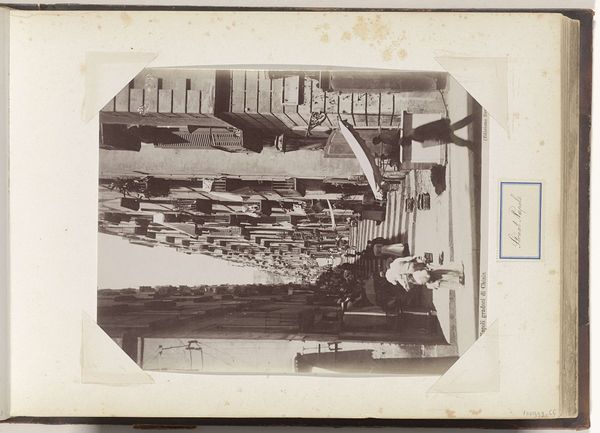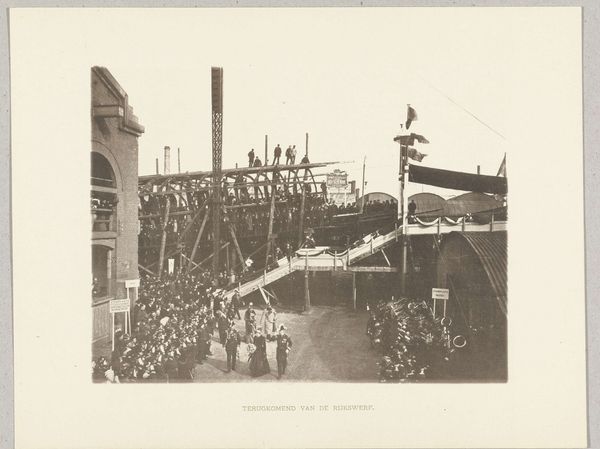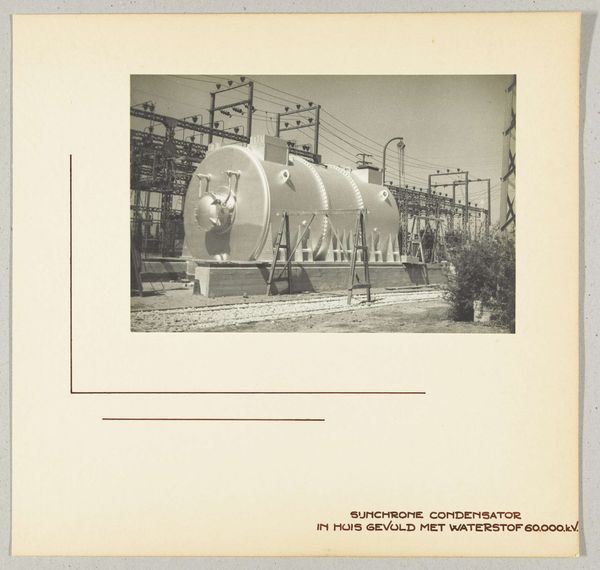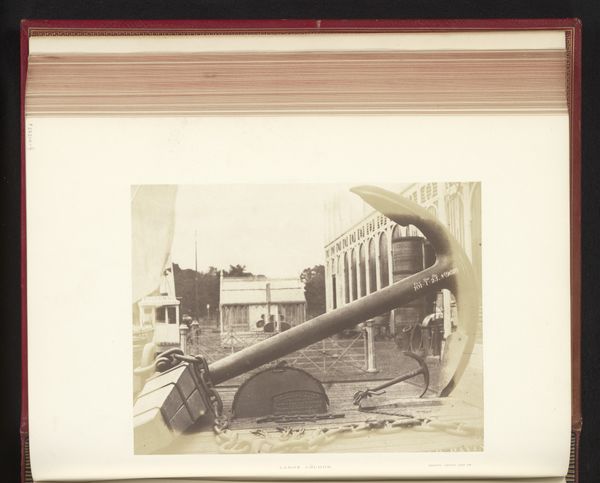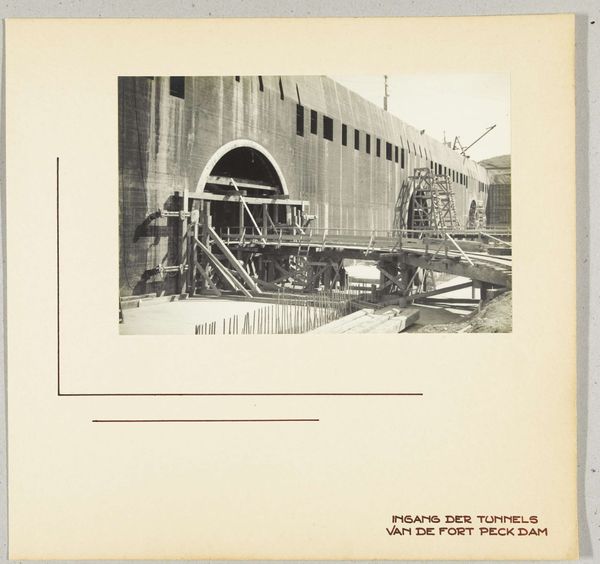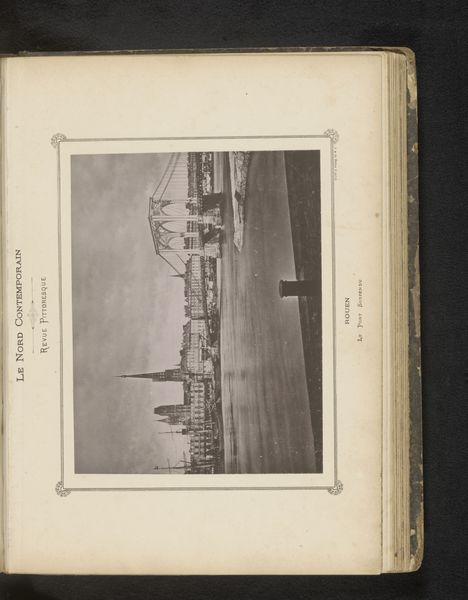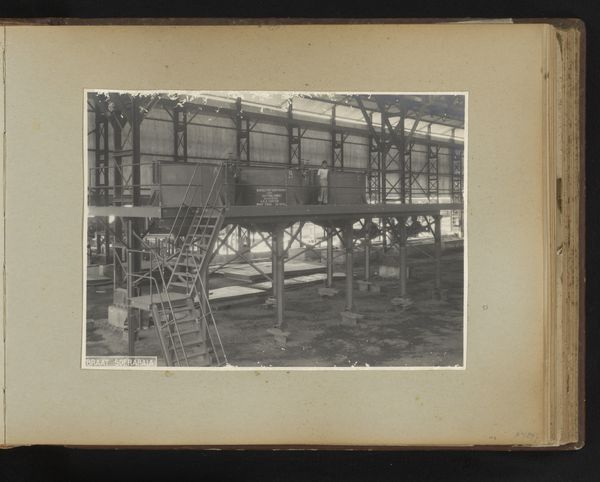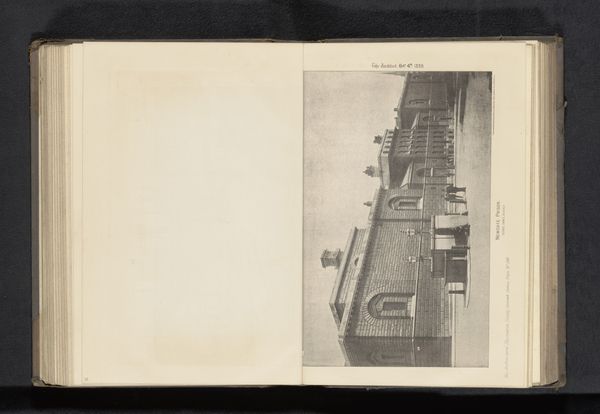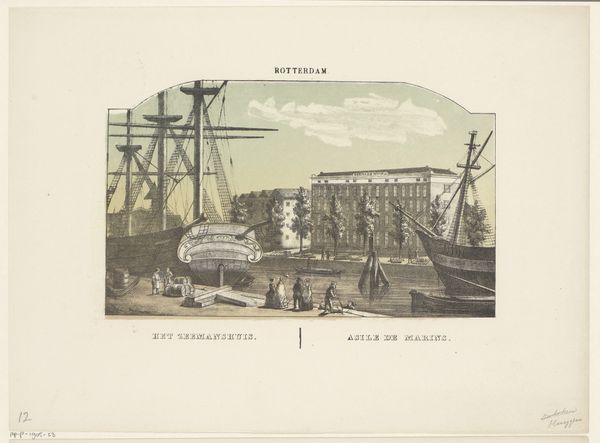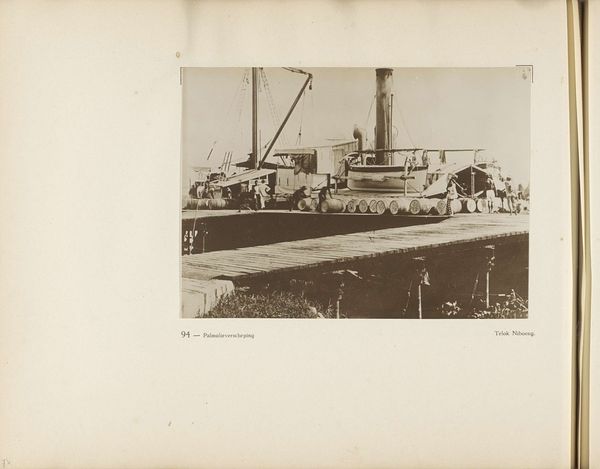
print, photography
# print
#
photography
#
orientalism
#
cityscape
Dimensions: height 162 mm, width 220 mm, height 253 mm, width 303 mm
Copyright: Rijks Museum: Open Domain
Curator: This captivating photographic print, "Electric Crane on the Quay of Southampton, Great Britain," likely dates from the period between 1895 and 1905. Editor: It gives me a strangely melancholic feeling. The sepia tone casts a dreamlike gaze upon the industrial activity, and the very visible human figures look a bit anonymous at that scale. Curator: Indeed, observe the monumental scale of the cranes against the figures below. It powerfully depicts modernity with those emerging technological capabilities, which will have altered our relationship to physical labor at the beginning of the twentieth century. Notice too the arrangement, echoing older compositional models that place humankind in subservient positions relative to displays of might. Editor: Right. And the cranes become potent symbols of empire and global trade. Southampton was a major port, a gateway connecting Britain to its colonial holdings. The "Orient" appears within the broader system, but this aesthetic feels rather clinical for a photograph with supposed 'Orientalist' traits. This photo serves to show what goes into the accumulation of global power. The composition suggests something both grand and somewhat isolating. Curator: What do you make of the title inscription, literally proclaiming, “Overhead Electric Cranes on Town Quay”? Its prominence elevates function to near iconic status. These new machines are not merely tools but representative emblems of progress. Editor: I think, though, there’s a visual tension between the order the title wants to impose and the messy reality of a working port, the labor of people barely discernible on the photo print, their physical toil now mediated, or threatened, by automation. And where exactly are these “Orient” references? In this industrialization, that context has likely all but disappeared. Curator: Fair enough. Though the style may appear far from classic ‘orientalism’ in painting or architecture, it presents technological achievements as objects of awe. One might trace a link to a broader discourse wherein western advancements are displayed as intrinsically linked to cultural dominance. Editor: An interesting nuance. For me, the photo captures a specific moment in the changing relationship between industry and community, made even more evocative with the muted tones and obscured figures. Curator: A moment suspended, indeed. A world on the cusp.
Comments
No comments
Be the first to comment and join the conversation on the ultimate creative platform.

